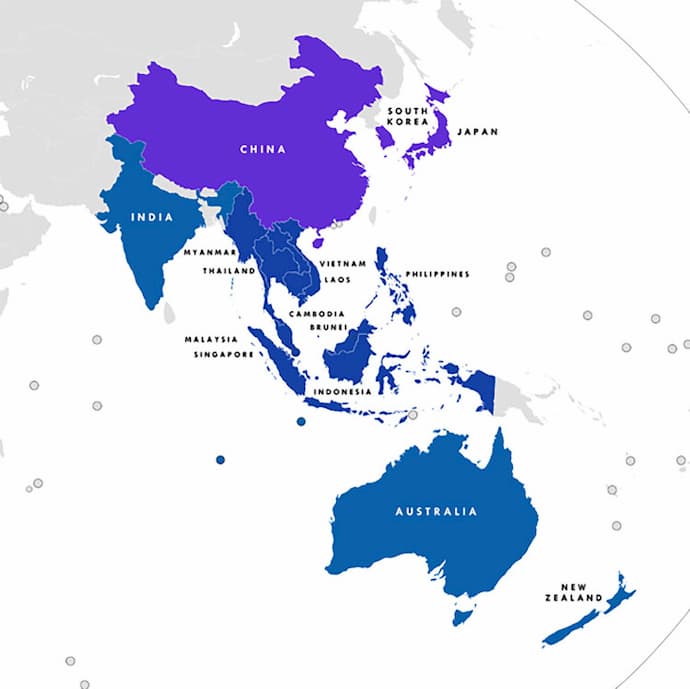The Regional Comprehensive Economic Partnership will be signed during the 4th RCEP Summit during the 37th ASEAN Summit in Vietnam in mid-November 2020.
The Phnom Penh Post reports that “the deal will open a wealth of new market opportunities for Cambodia to diversify its export portfolio and accelerate the inflow of regional investments.”
The 11th RCEP Intersessional Ministerial Meeting was held in October and all ASEAN ministers present at the meeting agreed to have it [the RCEP] signed by the end of 2020.
Regional Comprehensive Economic Partnership (RCEP)
The RCEP pact will be signed by the end of 2020 and it will be “the world’s largest trade bloc.”
The proposed Regional Comprehensive Economic Partnership (RCEP) agreement was initially part of ASEAN Plus Six. The pact will now include the 10 ASEAN countries as well as China, Japan, South Korea, Australia and New Zealand- 15 nations in total.
India was initially due to sign as part of the Plus Six but withdraw in November 2019. The reasons cited by the Indian government included “differences and concerns over some provisions in the proposed agreement — involving equitable market access, the rules of origin, dispute settlement mechanisms and sensitivities of domestic industries.”
RCEP was set to be the world’s largest free trade agreement (FTA), engaging more than 3.6 billion people (including India), or 48.1 per cent of the world population. The combined gross domestic product (GDP) of RCEP member states equalled $28.5 trillion last year (32.7 per cent of world GDP). The combined trade was worth more than $11.2 trillion (29.5 per cent) of world trade value.
Without India, the signees still represent a total GDP of more than $25.6 trillion (29.3 per cent of world GDP) and the trade value of more than $10.4 trillion (27.4 per cent of global trade).

What are the benefits of RCEP for Cambodia?
The RCEP negotiations were formally launched in 2012 at the ASEAN Summit in Cambodia and the agreement should offer increased opportunities to promote trade between fellow members and attract more investment.
The Cambodian Prime Minister, Hun Sen, previously said the RCEP will “convert Asian economy into a core economic polar aimed at averting protectionism and the widespread negative impacts of a trade war.”
Cambodia will hope to explore more agricultural crops initially to the Regional Comprehensive Economic Partnership nations.
Cambodian trade deals
Cambodia is looking to increase bilateral trade between Cambodia and Australia, which reached US$196 million in 2019 – up 32.6 per cent from 2018 according to the Australian Embassy.
In October 2020, the Free Trade Agreement between Cambodia and China was signed. The FTA with China is expected to boost bilateral trade to $10 billion by 2023. The bilateral trade volume between the two countries reached $7.4 billion in 2018, a 22% increase compared to 2017’s $6.04 billion, according to data from the Cambodian Commerce Ministry.
Cambodia and South Korea are also in trade deal negotiations in October 2020, while further talks are being held for a Eurasian Economic Union (EAEU) free trade agreement to expand trade volume and economic cooperation between Cambodia and the bloc.
Cambodia has been actively seeking to pursue new trade agreements with the imminent partial suspension of the ‘Everything But Arms’ (EBA) trade privileges in 2020.







